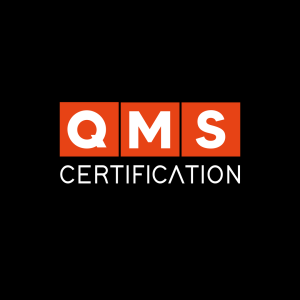In this article, we will talk a little about the characteristics of ISO 9001:2015 requirement 4.4 and why it is so important for your company’s quality management system!
When it comes to company processes, ISO 9001:2015 presents us with a key requirement. A requirement much commented on and that is present, directly or indirectly, throughout the company. This requirement is the “4.4 Quality management system and its processes”.
This item will talk about the importance of defining which processes exist in the organization, how they will work and which ones will be relevant to the quality management system. Through it, the organization can be guided to carry out the planning of processes before executing them, thus defining what will be relevant for its production.
After all, every organization needs to have control and the guarantee that its resources are following the proper regulations, if all the necessary resources will be available, among other requirements that guarantee a quality product or service to the customer.
Item “4.4 Quality management system and its processes”
Before we start debating the matter, let’s see what the requirement says:
4.4 Quality management system and its processes.
4.4.1 The organization shall establish, implement, maintain and continually improve a quality management system, including the processes needed and their interactions, in accordance with the requirements of this International Standard.
In fact, this requirement then indicates to companies that they must establish, implement, document, seek improvements and take into account everything they set out to do to achieve their goals.
In addition, the standard also says that for us to carry out the task of “determining the processes needed” and other elements that need to be specified. Let’s talk about each of them in more detail, following the recommendations of the standard:
a) Determine the inputs required and the outputs expected from these processes;
In order to have an adequate output of products, it is necessary to monitor the inputs as well. Here, the requirement suggests that you define all the necessary materials or services that must “go into” the process and what the final product (outputs) must be.
For example, imagine a company that produces chairs. Inputs would likely be materials such as wood, nails, glue, etc. And the outputs would be the final product: a chair assembled and ready for delivery. This would be the ideal expected for this process.
b) determine the sequence and interaction of these processes in the quality management system
To perform any task, it is necessary to follow a logical and correct sequence. It takes an organization so that no step gets in the way of another.
When manufacturing a chair, for example, we cannot cut the wood freely without first taking the necessary measurements to deliver a product within the standards and that will not present instabilities at the time of use.
c) determine and apply the criteria and methods (including monitoring, measurements and related performance indicators) needed to ensure the effective operation and control of these processes
When finalizing the manufacture of the chair, for example, how will you guarantee that the product is not bent or that it will support the weight that was pre-established at the beginning of the process?
Here, the requirement points out that it is necessary to analyze several criteria to determine that the process is really according to plan and that, of course, the final product is (or will be) fit and within the expected compliance.
d) determine the resources needed for these processes and ensure their availability
To make any type of product or service, it is necessary that there are resources to be used, whether they are raw materials, employees or the like. So the organization needs to ensure that these resources are always available when they are needed.
e) assign the responsibilities and authorities for these processes
In order for the tasks to be carried out and the final process to be delivered as expected, it is essential to establish responsibilities and authorities. Only then can we charge for results and improvements.
In addition, this definition is essential so that everyone involved is clear about what needs to be done, who needs to do it, and that they respect the limits of their performance.
f) address risks and opportunities as determined in accordance with the requirements of 6.1
Here, the organization must determine all the factors that can hamper its process and performance!
Thus, it is possible to articulate strategies to minimize impacts that the processes may suffer and also seek ways to take advantage of the opportunities that may arise during the execution.
g) evaluate these processes and implement any changes needed to ensure that these processes achieve their intended results
Every organization will always be subject to making changes to its processes, this is a fact. It is inevitable not to make them, even if they are small changes to meet the expectations that are required.
Therefore, it is necessary to evaluate and implement changes, when necessary, to always guarantee the best results. As well as to ensure the integrity of the processes.
h) improve processes and the quality management system
This requirement reminds the organization that any process can be improved, always!
Therefore, the company must always evaluate its results, question itself and analyze the points that can be improved, processes that can be optimized, etc.
This, of course, to achieve better and better results and more quality for your business!
Requirement 4.4: Mapping your processes!
Thus, we conclude that this requirement shows the importance of defining which processes exist in the organization and which are relevant to the quality management system.
From here, the organization can, for example, carry out a process mapping, seeking to identify the factors presented in the requirement. The processes will always be running, so it is necessary to organize them to be able to implement good practices and seek continuous improvement.











